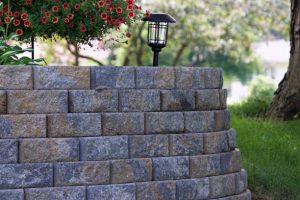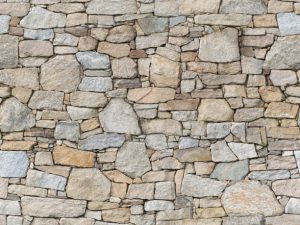From picturesque residential landscaping to grand commercial construction projects, retaining walls have become a staple in modern architecture. These versatile and visually appealing structures are designed to hold back soil and create level surfaces, making them a necessary element in land management. Retaining walls come in various shapes and sizes, and their material choices can be as diverse as the land they support. Their beauty and practicality make them an excellent addition to any property. This article will explore the benefits and beauty of retaining walls, the different types, and materials available, design considerations, installation processes, and maintenance and repair. So, let’s delve into the world of retaining walls and discover how these structures can enhance the aesthetics and functionality of any property.
 What is Retaining Walls?
What is Retaining Walls?
Retaining walls are an extremely useful tool for all kinds of construction. They can retain soil, create a more level landscape, and even add structural support to large building projects. With a wide range of materials, these walls are durable and come in many different shapes and sizes. For example, dry-stack or mortar wall designs provide excellent protection for soil erosion control and give a decorative edge to raised gardens or slopes. On the other hand, segmented walls are great for long-lasting additions that won’t need regular maintenance after installation is complete – perfect for a homeowner who wants to enjoy the benefits without too much extra investment. Regardless of your project needs, retaining walls are versatile and can be designed to fit almost any job site.
 Brief History of Retaining Walls
Brief History of Retaining Walls
Retaining walls have a surprisingly long history, with evidence of early use appearing in ancient civilizations. Ancient Egyptians used retaining walls to build irrigation systems to ensure their crops remained productive despite seasonal changes in water availability. Later, the Romans were well known for utilizing walls with multiple layers of stones and hidden drainage systems to support and drain land use, allowing them to conquer vast regions of Europe. In recent centuries, advances in construction and engineering have significantly improved the construction and durability of retaining walls – resulting in modern structures used for everything from residential gardens to large-scale infrastructure projects. Despite the long development of retaining walls, their usefulness remains timeless – creating stability and beauty in virtually any landscape project.
 Benefits of Retaining Walls
Benefits of Retaining Walls
Prevention of soil erosion
Prevention of soil erosion is one of the significant benefits of retaining walls. Soil erosion occurs when water runoff or the wind carries away soil particles, leaving bare and unstable land behind. This process can cause damage to properties, negatively impact natural habitats, and lead to sedimentation in waterways, which can harm aquatic ecosystems.
Retaining walls help prevent soil erosion by holding back soil, preventing it from being washed away by rainfall or runoff. The walls provide a barrier between the soil and water, minimizing the water’s velocity and allowing it to percolate into the soil gradually. The retention of soil also helps to maintain the quality of the soil, as it reduces the amount of soil lost through erosion, preserving the nutrient-rich topsoil.
Stabilization of slopes
When slopes are left without support, they can become unstable, leading to soil erosion, landslides, and other hazards. Retaining walls can provide the necessary stability to prevent these hazards from occurring.
Retaining walls provide a barrier against the forces of gravity and help distribute the weight of the soil evenly. It can help reduce the pressure on the slope, preventing it from becoming unstable. Retaining walls can also be designed with drainage systems to redirect water away from the slope, reducing the risk of soil saturation, which can lead to landslides.
Retaining walls can also create terraces or steps on slopes, making the land more accessible and usable. It can be particularly useful in residential properties, where slopes can often be difficult to navigate, limiting the usability of the land. By creating a series of terraces or steps, retaining walls can provide a safe and stable foundation for patios, gardens, or other outdoor living spaces, increasing the overall usability of the property.
Increased usability of land
Retaining walls provide an opportunity to increase the usability of land that may not have been previously accessible. By creating level surfaces, retaining walls can transform a sloping or uneven area into a functional and attractive space.
In residential properties, retaining walls can create tiered gardens, providing an aesthetically pleasing addition to the property and increasing the usable space for outdoor activities. Retaining walls can also create patios or seating areas, perfect for entertaining guests or relaxing outdoors.
In commercial properties, retaining walls can create level surfaces for parking lots or buildings, making the land more functional and valuable. Retaining walls can also create seating areas, plazas, or other outdoor spaces for employees or customers, increasing the property’s overall appeal.
Aesthetically pleasing design
Retaining walls are functional and provide an opportunity for creative and aesthetically pleasing designs. With a wide variety of materials and styles available, retaining walls can be customized to match the property’s existing design or to create a unique and eye-catching feature.
Retaining walls can be constructed using natural stone, brick, wood, or concrete, each with unique texture, color, and design possibilities. Additionally, retaining walls can be built in various shapes and sizes, such as curved, stepped, or terraced, allowing for a wide range of design options.
Types of Retaining Walls
There are several types of retaining walls, each with advantages and disadvantages. The retaining wall that is most suitable for a specific project will depend on factors such as the slope of the land, the soil conditions, and the desired aesthetic and functional features. Here are some common types of retaining walls:
Gravity retaining walls: These walls depend on their weight and the weight of the soil behind them to resist the lateral pressure of the soil. They are typically concrete or stone and appropriate for low to medium-height retaining walls.
Cantilevered retaining walls: These walls use a horizontal beam or footing to support the vertical wall. They are often reinforced concrete and suitable for medium to high-height retaining walls.
Anchored retaining walls: These walls are similar to cantilevered retaining walls but include additional support in cables or other reinforcement materials. They suit high-height retaining walls, heavy loads, or high lateral pressures.
Sheet pile retaining walls: These walls are made of interlocking steel, vinyl, or wood sheets pushed into the ground to form a barrier against the soil. They are appropriate for areas with limited space or where soil conditions make installing other retaining walls difficult.
Gabion retaining walls: These walls are made of wire baskets filled with rocks or other materials. They are suitable for areas where a natural or rustic look is desired and where the retaining wall needs to blend in with the surrounding landscape.
Natural stone retaining walls: These are made of natural stones, often without mortar or cement. They are suitable for areas where a natural or organic look is desired and where the retaining wall needs to blend in with the surrounding landscape.
What are the Materials Used for Retaining Walls?
Retaining walls can be constructed using a variety of materials, with each material presenting unique pros and cons. The selection of materials for a retaining wall will hinge on factors such as height and length, soil conditions, and the intended functional and aesthetic elements. Here are some common materials used for retaining walls:
Concrete: Concerning retaining walls, concrete has remained a popular choice. Its durability, strength, and adaptability make it versatile and reliable for constructing retaining walls. Concrete retaining walls can be customized to fit almost any space and can be designed in various shapes and sizes, from the simplest to the most complex designs. Concrete retaining walls can be reinforced with steel or other materials to increase their load-bearing capacity. In addition to their functional aspects, concrete retaining walls can enhance a property’s beauty. They can be finished with various textures, colors, and designs to blend seamlessly into the surrounding landscape.
Stone: Natural stones such as granite, limestone, or sandstone can create attractive and durable retaining walls. Stone walls can be dry-stacked, meaning the stones are laid without mortar or can be mortared for added stability.
Brick: Brick retaining walls are popular for their classic look and durability. Brick walls can be constructed in various patterns and finished with a mortar or without, depending on the desired look.
Timber: Timber retaining walls can provide a natural look and are often used in areas where the retaining wall needs to blend in with the surrounding landscape. Timber walls are typically made of pressure-treated wood or other rot-resistant species and can be designed in various heights and lengths.
Gabion: Gabion walls are made of wire baskets filled with rocks or other materials. They provide a natural and rustic look and are often used in areas where the retaining wall needs to blend in with the surrounding landscape.
Modular block: Modular block retaining walls are made of precast concrete blocks that interlock. They are popular for their ease of installation and durability and can be designed in various sizes and shapes.
In conclusion, retaining walls are essential to any property’s outdoor space. Their functional benefits in preventing soil erosion and stabilizing slopes cannot be overstated, while the aesthetic benefits of retaining walls enhance a property’s beauty and value. Choosing the right material and design for a retaining wall is crucial to achieving the desired results and creating a long-lasting, functional feature for your property. Although retaining walls may seem like a significant investment, their long-term benefits make them valuable to any outdoor space. Therefore, if you want to enhance your property’s functionality and beauty, consider adding a retaining wall to your landscape design.

